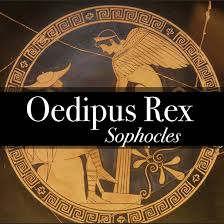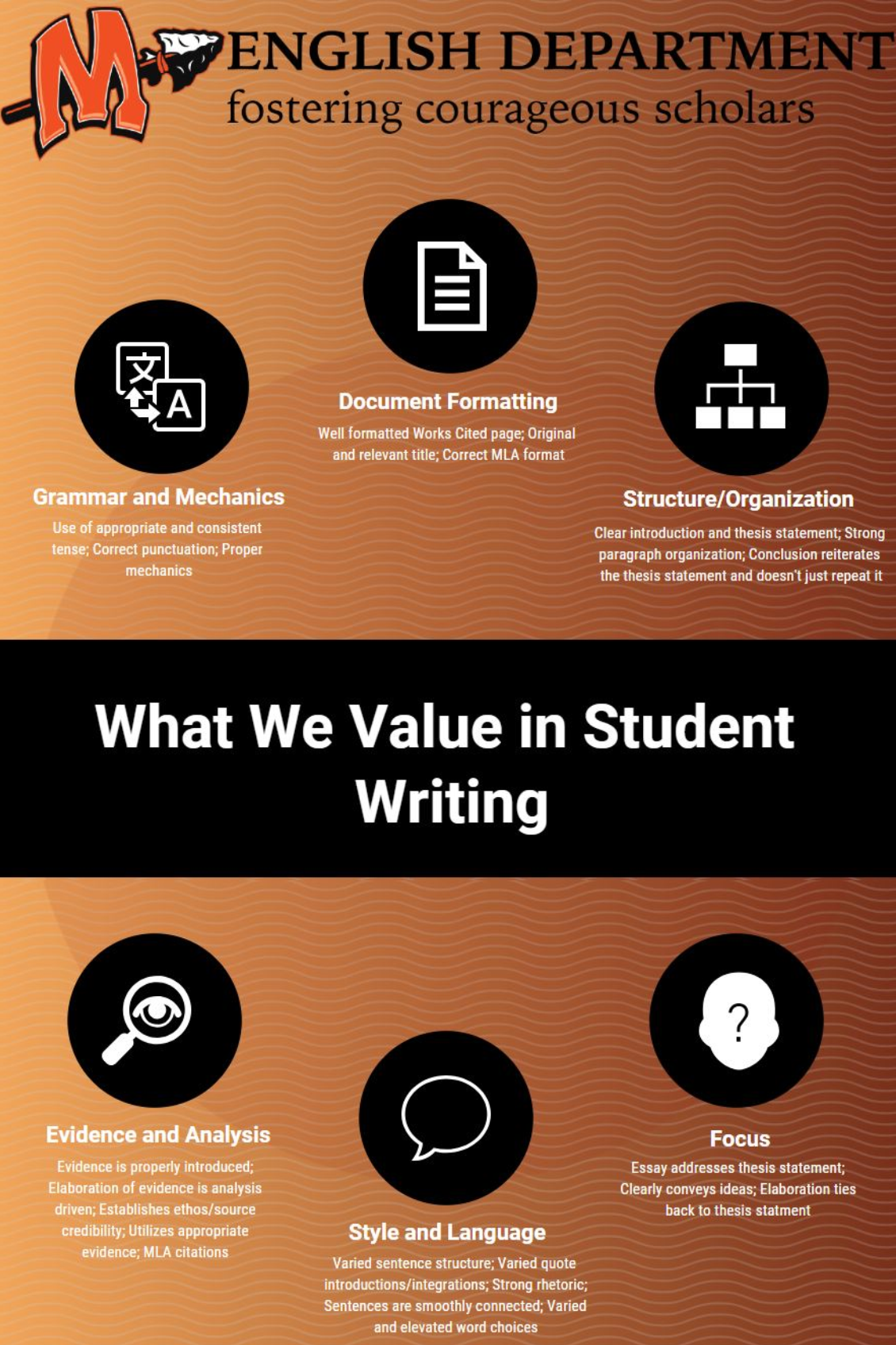English Department
The purpose of the English department at MCHS is to foster the habits of mind, critical thinking, and literacy skills—reading, writing, listening, speaking, and digital communication—that are necessary for students’ success as engaged and informed lifelong learners in various rhetorical and creative contexts.
Department Chair:
JaRita Steward
English Department Chair
Minooka Community High School District #111
Email JaRita Steward
Phone: 815-521-4060
"The reading and study of literature can provide moments of engagement, reflection, and remembrance in the literacy journeys of children and adolescents. We...can guide our students as they read literature from various cultural experiences and worlds and also enact literacies across the communities to which they belong. More specifically, literacy selections and conversations that reflect our country's pluralism are essential for a democracy....
Schools are sites for our students' growth and change, especially through literature that can sustain students' cultural knowledge and ways of being, knowing, and understanding themselves in the presence of the familiar, their classmates, and diverse communities. In fact, our students will meet literary characters who may change them, characters for whom they may develop empathy and with whom they form a bond, as well as characters they may be indifferent or resistant to, even characters who help them 'become citizens of the world who can make ethical decisions....'
[W]e can affirm and sustain our students' coming-of-age, cultural knowledge, and identity formation across the literary and informational texts we teach."
--R. Joseph Rodríguez, Assistant Professor California State University, Fresno
Excerpted from Leila Christenbury and Ken Lindblom's Continuing the Journey: Becoming a Better Teacher of Literature and Informational Texts
English I & Honors English I
The purpose of English I at MCHS is to focus on the foundations of literacy, including reading and analyzing texts, writing, active listening, and introductory speaking skills. Preliminary research methods are introduced, as well as editing and formatting.

Of Mice and Men
Raisin in the Sun

Romeo and Juliet

Great Expectations

A Tale of Two Cities
English II & Honors English II
The purpose of English II at MCHS is to continue to build upon rhetorical strategies through reading, writing, listening, and speaking while developing information literacy and research skills.

To Kill A Mockingbird

Julius Caesar

The House on Mango Street

The Lord of the Flies

Oedipus Rex

All Quiet on the Western Front
English III
The purpose of English III at MCHS is to aid student understanding of American literature through reading and discussion of various texts, and to develop their rhetorical, argumentative, and writing skills.

The Catcher in the Rye

The Great Gatsby
English IV
The purpose of English IV at MCHS is to utilize the foundation built by English I-III in order to foster scholarly application of critical thinking, rhetoric, and research by way of comprehension, composition, communication, and collaboration.

Canterbury Tales

Brave New World
Rationale of Assessing and Evaluating Student Writing
What We Value in Student Writing
The MCHS English department recently went through a process of Dynamic Criteria Mapping (DCM), a model created by Illinois State University English professor, Bob Broad. According to Broad, DCM is “a workable method by which instructors and administrators...can discover, negotiate, and publicize the rhetorical values they employ when judging students’ writing.”
This process is an effort for the English department at MCHS to be transparent with students, parents, and the community by clearly communicating what we value in student writing.
The English department annotated anonymous student essays from across grades 9-12 with each teacher noting what it is that he/she values about each essay. Next, the department met together to go through each of the essays and share our values with each other while pointing to specific examples from the student essays to illustrate our points.
Consensus was not necessary at this stage of the process. The following are some examples of the brainstorming effort:


After the initial brainstorming session, the department met again to come to consensus on what exactly we value in student writing. We developed the following categories and included the following criteria in each category:









